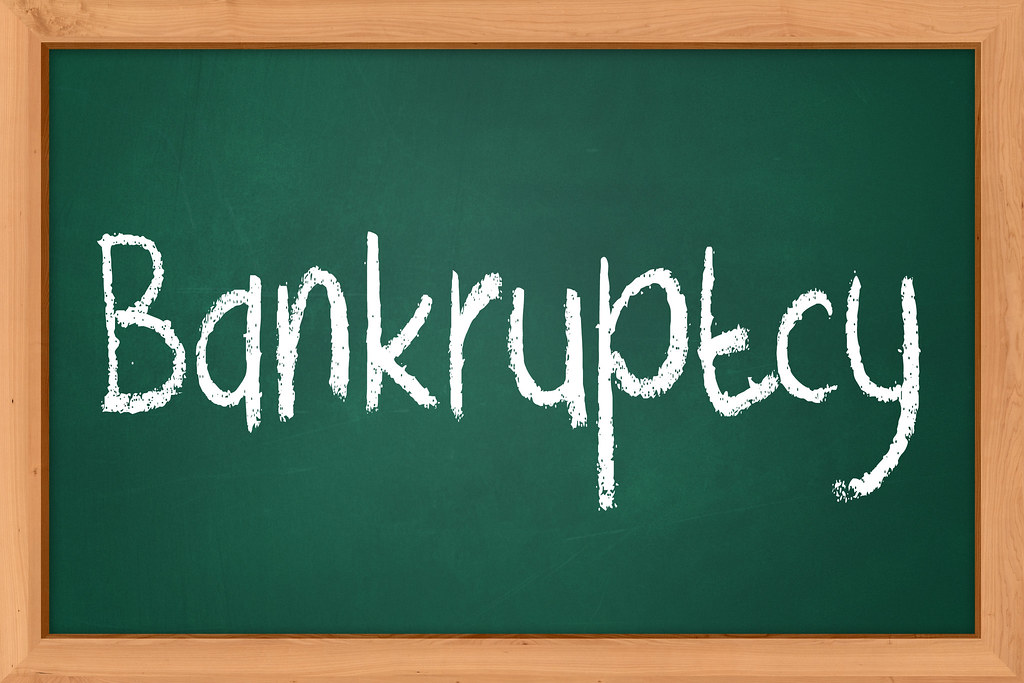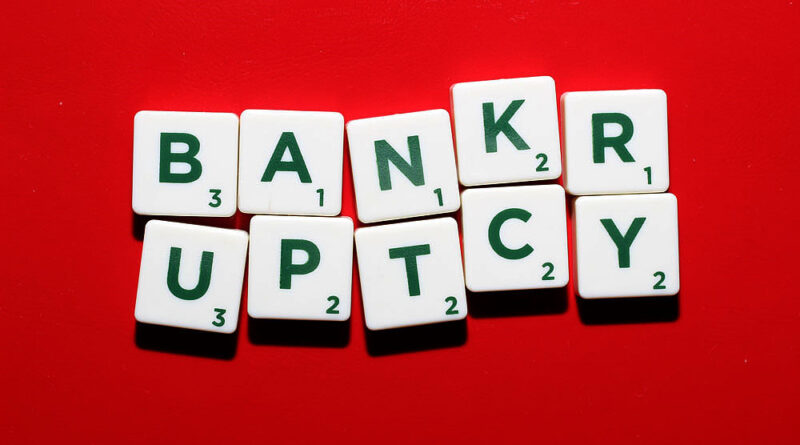Protecting Your Assets: A Beginner’s Guide for Real Estate Investors Against Bankruptcy
Real estate investment is a promising venture for many, but it comes with its risks. As a real estate investor, you’ve likely invested a significant amount of capital, time, and effort into your portfolio, and the last thing you want is to lose everything you’ve worked for. Unfortunately, bankruptcy is a real threat that can result in just that.
But there’s good news! There are steps you can take to protect your real estate assets against bankruptcy, and that’s what this beginner’s guide is all about. In this guide, we’ll take you through the steps you need to take to protect your assets, minimize risks, and secure your financial future as a real estate investor.
So, whether you’re a seasoned investor or just starting out, read on to learn how to protect your real estate assets against bankruptcy. The promise of this guide is to help you safeguard your real estate assets against bankruptcy. By following the steps we outline, you can mitigate the risks associated with bankruptcy and secure your financial future.
The Fears and Risks of Bankruptcy for Real Estate Investors
Bankruptcy can be a frightening prospect for real estate investors, especially those who have invested significant amounts of capital, time, and effort into their portfolio. Losing assets, reputation, and even personal assets are just some of the fears real estate investors face. Losing assets can mean losing not only physical properties, but also equity and investments that may have taken years to build up. Additionally, bankruptcy can tarnish an investor’s reputation, making it difficult to secure financing or attract new investors in the future.
What Success Looks Like in Protecting Your Real Estate Assets Against Bankruptcy
Success in protecting your real estate assets against bankruptcy means that you can weather financial storms and continue investing in your portfolio. It means that you have taken the necessary steps to mitigate the risks associated with bankruptcy and have secured your financial future as a real estate investor. By protecting your assets, you’ll have peace of mind knowing that your investments are safe, and your financial future is secure.
Understanding Bankruptcy and its Implications for Real Estate Investors
Bankruptcy is a legal process that individuals or businesses can use to discharge their debts or restructure their finances. In the context of real estate investment, bankruptcy can occur when an investor is unable to pay their debts or obligations, which can result in the loss of their assets. This can be devastating for real estate investors, who may lose not only their properties but also their equity and investments. Additionally, bankruptcy can negatively impact an investor’s credit score and reputation, making it difficult to secure financing or attract new investors in the future.
Therefore, it is essential for real estate investors to understand the implications of bankruptcy and take the necessary steps to protect their assets against this risk.
Why Protecting Your Real Estate Assets is Important
Real estate investment involves a significant amount of capital, time, and effort. It is essential to protect your assets as much as possible to ensure that you can continue investing in your portfolio. Here are some reasons why protecting your real estate assets is essential:
- Minimizes Risks: Protecting your real estate assets can help mitigate the risks associated with bankruptcy. It ensures that your assets are secure in the event of bankruptcy and helps you avoid losing everything you have worked for.
- Protects Your Financial Future: Protecting your assets also ensures that your financial future is secure. Losing your assets can have a significant impact on your financial stability and future.
- Maintains Your Reputation: As a real estate investor, your reputation is crucial. Protecting your assets helps you maintain your reputation as a reliable and responsible investor.
- Allows You to Continue Investing: Protecting your assets allows you to continue investing in your portfolio without worrying about the potential loss of your assets.
The Steps to Protecting Your Real Estate Assets
Here are the steps you need to take to protect your real estate assets:
- Understand Your Risks: The first step in protecting your real estate assets is to understand the risks associated with bankruptcy. This includes knowing your obligations and liabilities, as well as your legal rights as an investor.
- Form a Legal Entity: Forming a legal entity, such as a Limited Liability Company (LLC), can help protect your personal assets from any liabilities associated with your real estate investments.
- Secure Adequate Insurance: Insurance can protect you against unexpected events, such as natural disasters or accidents. Make sure you have adequate insurance coverage for all of your properties.
- Manage Your Finances: Managing your finances carefully can help prevent bankruptcy. Keep track of your income and expenses, and create a budget that allows you to stay within your means.
- Use Leverage Responsibly: Leverage can be a powerful tool for real estate investment, but it can also lead to bankruptcy if not used responsibly. Make sure you understand the risks and benefits of leverage before using it in your investments.
- Protect Your Intellectual Property: If you have developed a unique real estate investment strategy, it’s important to protect your intellectual property. This can be done by registering trademarks or patents, or by keeping your strategy confidential.
- Stay Up-to-Date on Regulations: Real estate regulations can change frequently, so it’s important to stay informed and comply with all relevant laws and regulations. This includes understanding zoning laws, environmental regulations, and tenant protection laws.
- Work with Experienced Professionals: Working with experienced professionals, such as attorneys and accountants, can help you navigate the complex legal and financial aspects of real estate investment. They can provide valuable guidance and help you make informed decisions.
- Document Everything: Keeping detailed records of your real estate investments can help protect you in the event of bankruptcy. Make sure to keep copies of all contracts, leases, and other important documents.
- Monitor Your Portfolio: Regularly monitoring your real estate portfolio can help you identify and address any potential issues before they become major problems. Keep track of market trends, property values, and tenant satisfaction.
Precautions to Take
While the steps outlined above can help protect your real estate assets against bankruptcy, there are some precautions you should take:
- Be cautious when using leverage, and only take on debt that you can afford to repay.
- Make sure to comply with all relevant laws and regulations.
- Work with reputable professionals who have experience in real estate investment.
- Keep detailed records of all your investments and financial transactions.

Best Practices
Here are some best practices to follow when protecting your real estate assets against bankruptcy:
- Stay informed about changes in the real estate market and regulations.
- Monitor your finances closely and avoid taking on excessive debt.
- Develop a strong real estate investment strategy and protect your intellectual property.
- Work with experienced professionals who can provide valuable guidance and support.
- Stay organized and keep detailed records of all your investments.
Protecting Real Estate Assets Against Bankruptcy
Here are some examples of how protecting your real estate assets against bankruptcy can be used for maximum effect:
- Real Estate Investment Trusts: Real Estate Investment Trusts (REITs) are a popular way to invest in real estate without the risks associated with direct ownership. By investing in a REIT, you can benefit from the income generated by real estate investments without the legal or financial responsibilities of direct ownership.
- Real Estate Syndication: Real estate syndication is a method of pooling resources to invest in real estate projects. By joining forces with other investors, you can spread the risks associated with real estate investment and take advantage of larger opportunities.
- Strategic Partnerships: Forming strategic partnerships with other investors or companies can help you expand your real estate portfolio and reduce risks. By partnering with someone who has expertise in a particular area or market, you can benefit from their knowledge and experience.
These are just a few examples of how protecting your real estate assets against bankruptcy can be used to your advantage. By taking a proactive approach to protecting your assets, you can minimize risks and maximize your returns.
Final Words
Real estate investment can be a profitable and rewarding venture, but it’s not without its risks. Protecting your real estate assets against bankruptcy is crucial for securing your financial future and ensuring that you can continue investing in your portfolio.
By following the steps outlined in this guide, you can minimize the risks associated with bankruptcy and maximize your returns as a real estate investor. Remember to take precautions, follow best practices, and work with experienced professionals to ensure the best possible outcome.
So, whether you’re just starting out or you’re a seasoned real estate investor, start protecting your assets today and secure your financial future for years to come!
